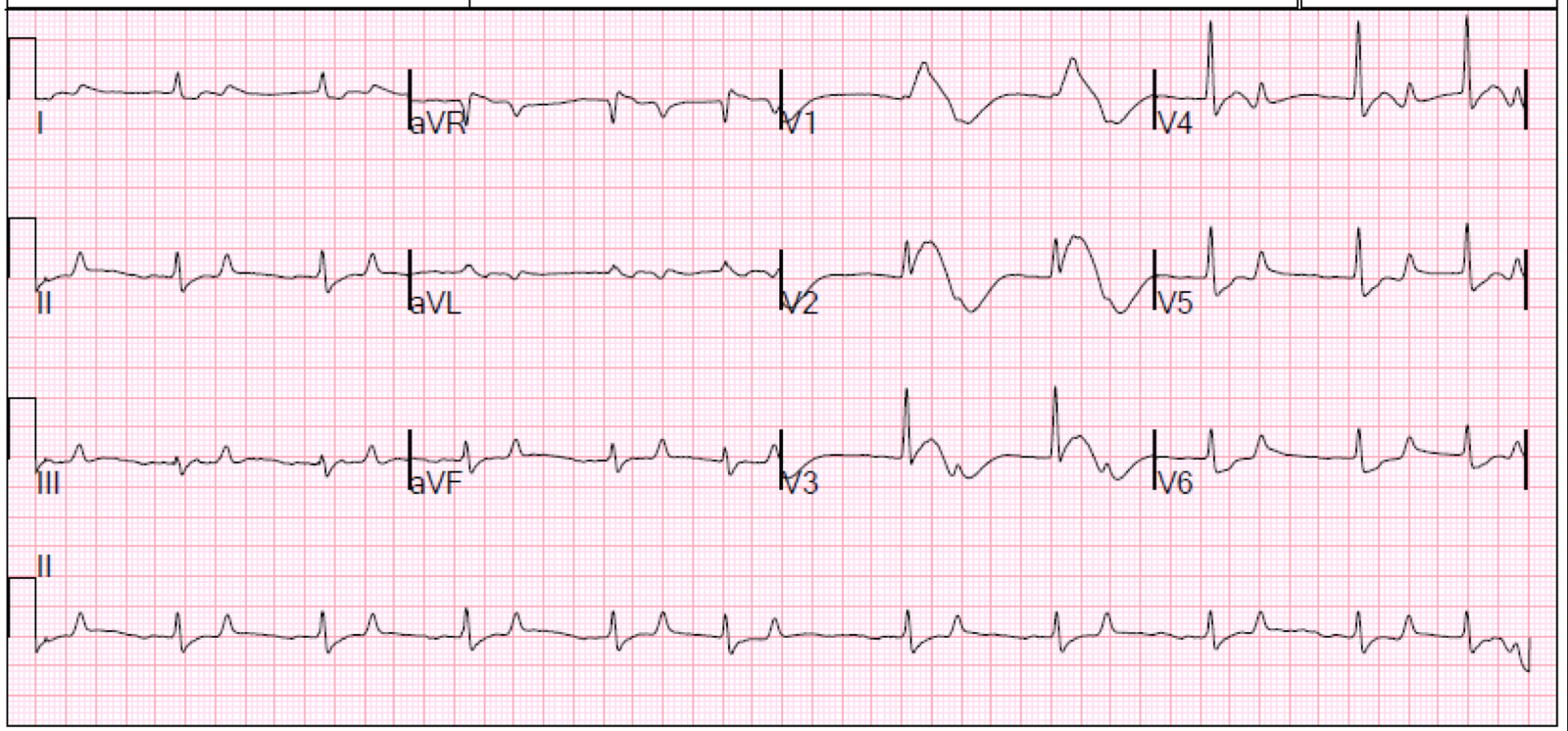The following case was incredibly interesting for other reasons, but in order to maintain confidentiality and also to allow for a subsequent case report by the physicians caring for the patient, I limit the discussion to the ECG findings and their etiology.
A man was resuscitated from an Asystolic Cardiac Arrest with Epi, bicarb, and chest compressions. He was in shock.
Here was the initial 12-lead:
 |
| This is nearly pathognomonic of at least one condition. What is it? |
There is sinus rhythm with a prolonged QRS, right precordial ST elevation, and very peaked T-waves in V4-V6. This is hyperkalemia until proven otherwise.
It is possible that the ST elevation is due to STEMI, but unlikely.
Hyperkalemia often produces a Brugada-like right precordial PseudoSTEMI pattern.
The pH was 6.65, with a K of 7.5 mEq/L.
Here are 7 other examples of PseudoSTEMI due to HyperK:
1. https://drsmithsecgblog.com/2013/06/a-tragic-case-related-to-last-post.html
2. https://drsmithsecgblog.com/2013/11/you-must-recognize-this-pattern-even-if.html
3. https://drsmithsecgblog.com/2013/06/hyperkalemia-and-st-segment-elevation.html
4. https://drsmithsecgblog.com/2013/06/this-ecg-is-pathognomonic-of-life.html
5. (there are 3 in this post): https://drsmithsecgblog.com/2013/02/right-bundle-branch-block-with-st.html
There is remarkably little literature on ECG findings in severe acidosis.
He was given Calcium, bicarbonate, and Insulin
This ECG was recorded 30 minutes after the first:
 |
| Same findings, but less pronounced, and slower rate |
The pH at this point was 6.80, with a K of 6.2 mEq/L. More Calcium and Bicarb were given.
At 1 hour, with a pH of 6.95 and K of 7.2 (difficult to control), another ECG was recorded:
 |
| Similar |


I am not that good, but i think the first EKG is irregular,
Hey Steve thanks for the great case! Hyper K is the syphilis of EKGs. Steve was this PTs hyper K due to shock and acidosis exclusively? Also what caused the shock? Thanks!
Is there a correlation between the potassium level and heart rate? It appears that it speeds up as the potassium rises, seems like it would be the other way around.
It looks like the T wave is peaked because of a buried p wave.
Did the patient survive? there seems to be an ongoing hyperkalemia despite improving ABG, which is ominous..
This comment has been removed by the author.
In such a criticlly ill patient, there are too many variables to predict the response to hyperK.
Steve Smith
I'm not exactly sure what bump you are referring to, but you may be right. But hyperK usually flattens P-waves do where they may be invisible, even though the sinus is still driving the rate
Marco,
you are correct. It is ominous and the patient did not survive.
Steve
To give the cause of the shock and acidosis might reveal the patient's identity, so I cannot give it. I will say it was toxic.
Hi Steve, are these changes purely due to the high K?
These changes are not what I'm looking for with hyper k. Was calcium okay?
Wayne, there may be some contribution of acidosis, but hyperK alone can do this.
Steve